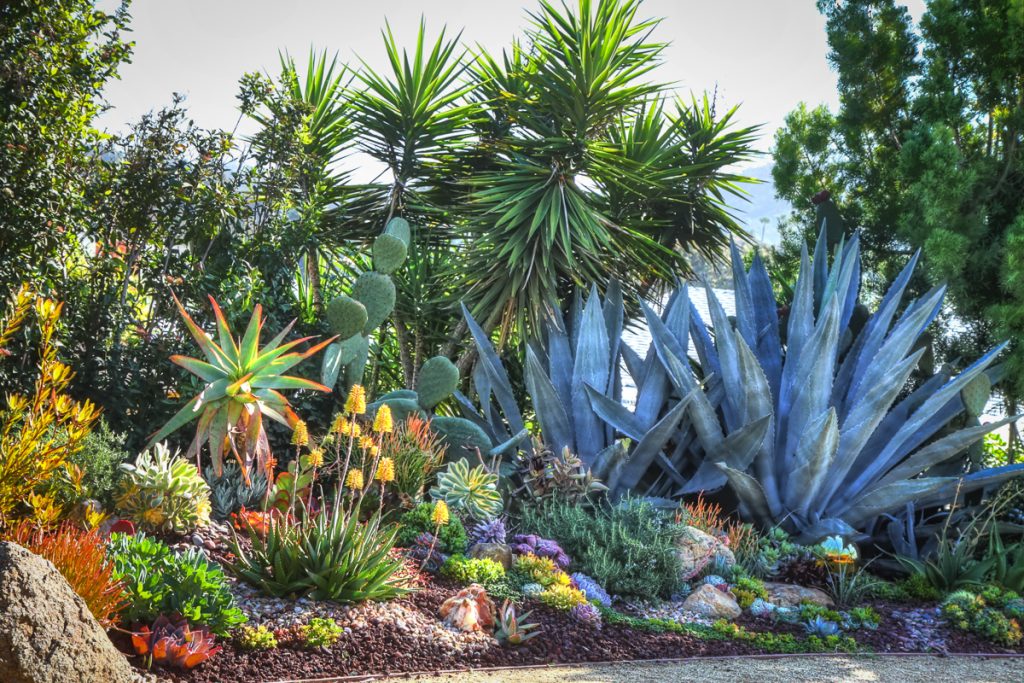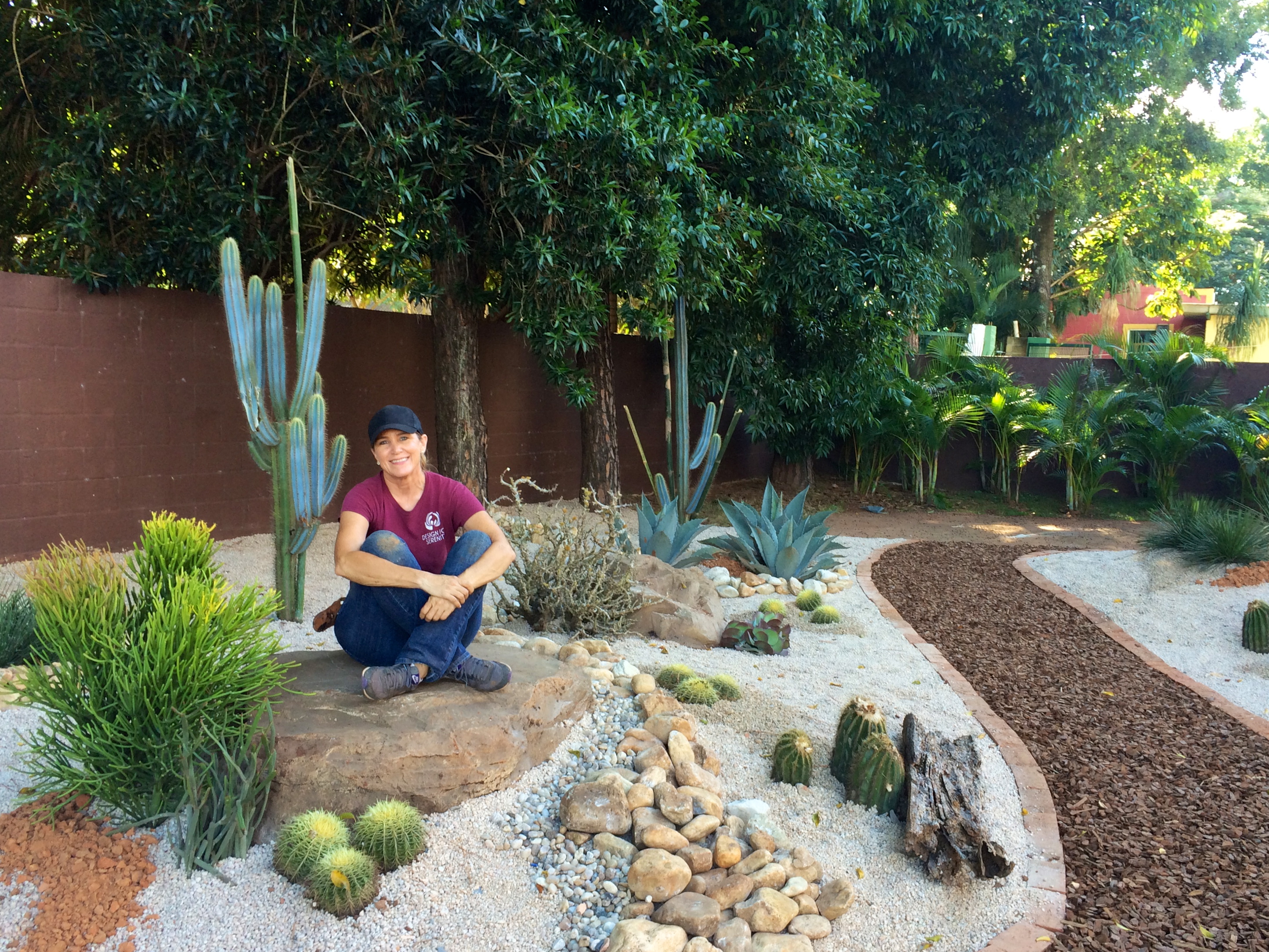Several years ago at a Water Conservation Garden event at Cuyamaca College, I met Laura Eubanks. I stopped at her booth to talk to her because she had some of the most beautiful succulent displays I’d seen in a long time. At the time, Laura was an aspiring landscape designer. She asked a lot of questions, and even then I knew she would be successful.
Today, Laura’s company “Design for Serenity” and her one of a kind drought tolerant landscapes are gaining worldwide acclaim. She recently returned from Brazil where she installed two demonstration gardens.
What I didn’t know until recently is why Laura was drawn to gardening. It was her escape from a childhood of unimaginable abuse. Laura was recently honored by the organization “Leap to Success” with its “I Leap Award,” given to women who have achieved significant career goals while overcoming adversity or breaking through barriers, and who are inspiring role models to other women.
The I Leap Award winners tell their stories on videos on the Leap to Success website. Laura tells her story publicly for the first time. Watch it here.
What Laura instinctively understood is the power of nature to help people heal. Gardens have been used to aid in the healing process throughout history. Examples include Japanese Zen Gardens and Monastic Cloister gardens. When medicine turned more and more to technology, the use of gardens and nature in healing was set aside and somewhat forgotten.
But today, there is a renewed interest in more holistic and less invasive methods of treating our physical, emotional, and mental ailments. Recent research by my colleague and friend Dr. Roger Ulrich at the Center for Health Systems and Design at Texas A&M University found people recover more quickly from stress related problems and even disease and surgery when they view gardens and nature in general. They take less pain medication and their hospital stays are shorter.
This traditional approach is now called horticultural therapy. It’s been practiced since ancient Greece, but it wasn’t considered a scientific field until the 18th century in the United States. Psychiatrist Benjamin Rush, considered the “Father of American Psychiatry,” started documenting how gardening benefited his mentally ill patients. Dr. Rush also took time to sign the Declaration of Independence.

Laura Eubanks understands the healing properties from being in a garden and working with plants in a natural setting. This is one of her projects for her company Design for Serenity. Photo: Kyle Short
Today, physicians, psychiatrists and occupational therapists are taking horticultural therapy more seriously than ever. In addition to exposing patients to nature at hospitals and other treatment settings, active gardening is being used as a form of therapy. This is exactly what Laura Eubanks did for herself, and is now implementing for her clients.
Medical researchers have learned over the last decade how much stress affects us physically as well as mentally. Stress releases cortisol, the “fight or flight” hormone that controls stress response. When we can reduce and control stress and calm our nerves, we prevent cortisol from flooding our bloodstream and causing all kinds of problems. For example, a Swiss study found the addition of horticultural therapy to a pain-management program improved participants’ physical and mental health and their coping ability with respect to chronic pain.
Researchers are pushing horticultural therapy further now and applying it to mental health issues such as PTSD and depression. Study after study finds improvements in mental health among prison populations, juvenile rehabilitation centers, nursing home residents, and mental health treatment centers. It improves learning and reduces bullying in schools. It relieves the worst symptoms of dementia.
From my own brief experience, the simple act of donating plants to the formerly homeless San Diegans now living at the Alpha Center downtown brought genuine smiles and positive energy to people who haven’t had much to smile about for a long time.
Therapeutic gardens are starting to pop up all over the place, from hospitals to prisons to retirement homes to rehab facilities. Even community gardens can bring people together and foster better relationships in our own neighborhoods.
So why not make more of an investment in horticultural therapy programs and build therapeutic gardens wherever we can? It seems like our country needs all the healing and relationship building it can get right now. I know my friend Laura Eubanks would agree.
You can learn more about Laura and her work at her website, Design for Serenity. Follow her YouTube channel for her fun “Succulent Tip of the Day.”


